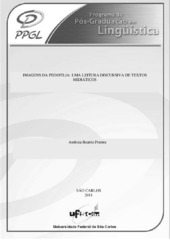Imagens da pedofilia: uma leitura discursiva sobre os textos midiáticos
Abstract
The aim of this master's research is to understand the contemporary discourses on the subject of child sexual abuse. Building on the conceptual assumptions of Discourse Analysis, especially those developed by the French linguist Dominique Maingueneau, we try to understand the Discursive Formation constitution through texts of different genres and media. With the theoretical framework of the French linguist, was possible to follow some of the theoretical and methodological paths that led us to develop the desired study. Among these contributions, it is the concept of Constitutional Discourse, as it was the one in which self-legitimation and others ways of legitimation among discourses occur in the position by displacement and registration of their speakers in their act of stating this type of discourse. Besides, we mobilized the notion of Topic Discourse as one that can not give yourself a purpose of validation, constantly used in another discourses in order to legitimize itself, including the constituents. But the Non- Topic Discourse (Atopic) is the discourse without place, something on the order of the Paratopy (which belongs to the social space, but denies it), in which the production and circulation tend to be most often impassable. Although there is similarity in the way of belonging, it seems that, for this author, is more likely to find the Topic and Paratopic Discourses together on one side and the Non-Topic (Atopic) Discourse into another, as if we erased the existence of these discourses was made it impossible inside the first textuality discursive with the other two. Equipped with these concepts, we develop a first time reading of the corpus, in which we try to find the types of discourses marks in the texts that comprise it. From this methodological procedure, we selected the corpus in question some texts from the years 2002 to 2008, which was composed mostly as to what Maingueneau identifies as a Topics Discourses, and in this corpus we try to find regularities through which the discourses and Non-Topic (Atopic) constituents could subscribe to this. The recovery process of the Component Discourse by Topic Discourse could then be through the citation of voices in positions of authority. It was also possible to note that the Non-Topic (Atopic) Discourse even being denied as a discourse , can be reflected in the Topic Discourse and to give their brands through the images. So, to answer these hypotheses, from a discursive look, constituted the focus of this dissertation.
